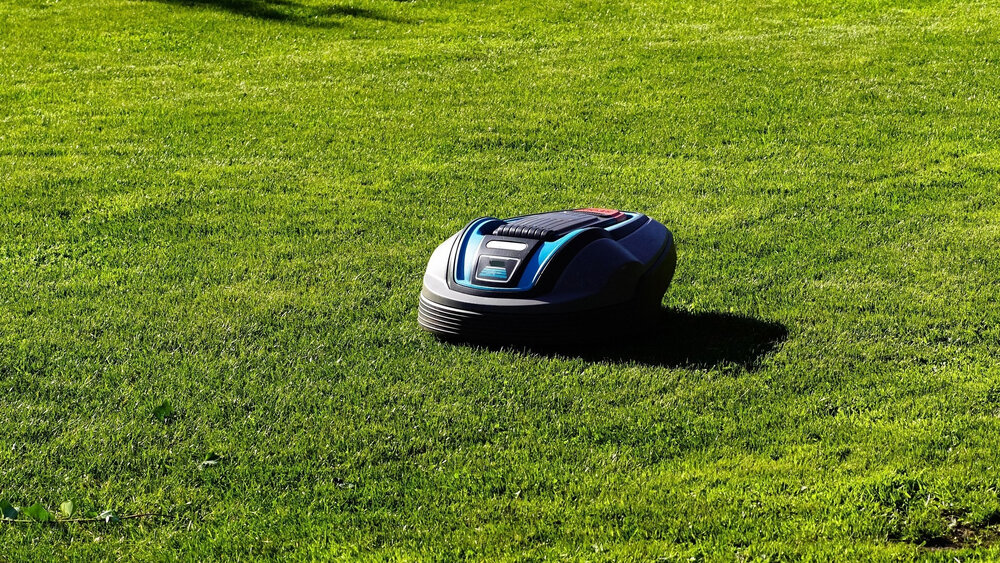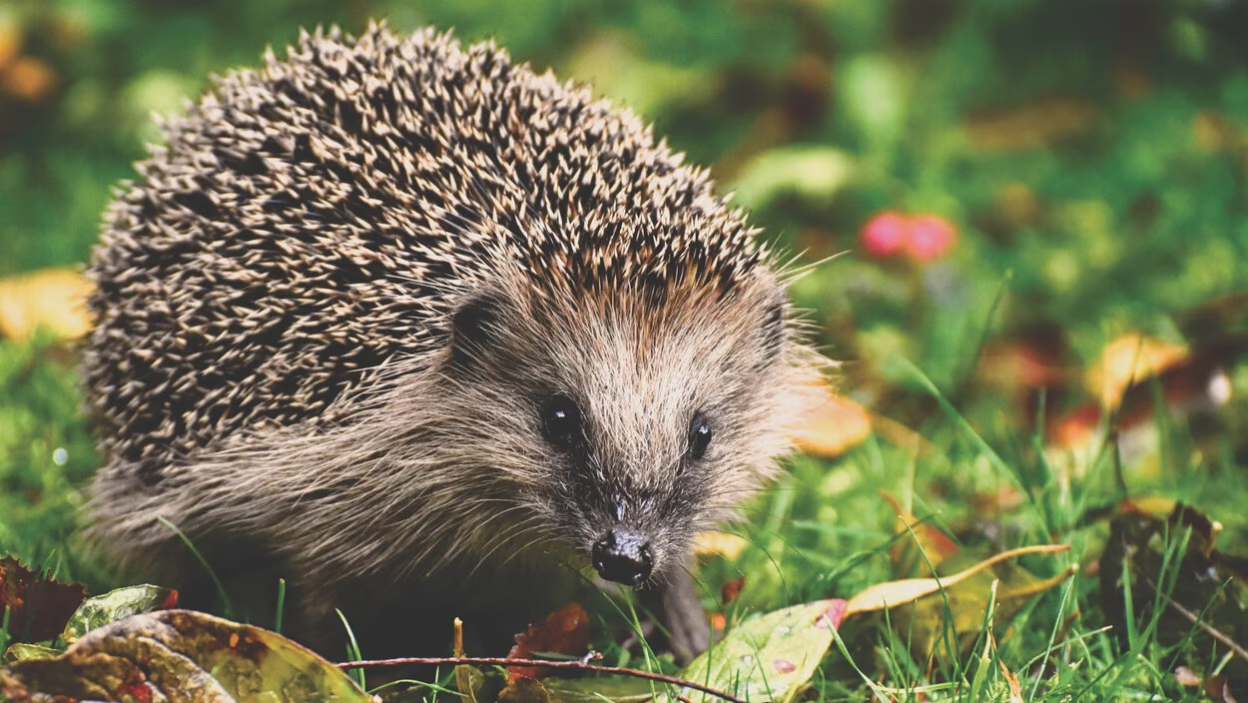Hedgehog protection



Chemnitz is looking for the hedgehog
Call for reports of hedgehog observations in Chemnitz
The hedgehog lives in our immediate neighbourhood, but despite its great popularity, hedgehog sightings are becoming increasingly rare. This is partly due to its crepuscular and nocturnal lifestyle. On the other hand, hedgehog populations have declined sharply throughout Europe. On the International Red List, updated in 2024, the hedgehog is categorised as "potentially endangered" for the first time.
There are many reasons for the decline of the hedgehog. One of the most important reasons is the lack of insects as their main source of food, in addition to road casualties. However, the loss of habitat due to a lack of hiding places and overly intensive garden maintenance and the night-time use of robotic mowers is also leading to the decline of hedgehogs.
In order to understand the causes of the decline and to improve conservation initiatives, it is important to have a good overview of the hedgehog population in the city of Chemnitz.
Please help us and report any hedgehogs you find.
Hints
- Please refrain from photographing your hedgehog with a flash.
- Please do not report the hedgehog from your garden more than once.
- It is not permitted to mark the animals for better differentiation. We will take duplicate reports into account in our analyses.
The hedgehog lives in our immediate neighbourhood, but despite its great popularity, observations of hedgehogs are becoming increasingly rare. This is partly due to their crepuscular and nocturnal lifestyle. On the other hand, hedgehog populations have declined sharply throughout Europe. The hedgehog is categorised as "endangered" for the first time on the International Red List updated in 2024.
There are many reasons for the decline of the hedgehog. One of the most important reasons is the lack of insects as their main source of food, in addition to road casualties.
However, the loss of habitat due to a lack of hiding places and overly intensive garden maintenance and the night-time use of robotic mowers is also leading to the decline of hedgehogs.
In order to recognise the causes of the decline and to improve conservation initiatives, it is important to have a good overview of the hedgehog population in the city of Chemnitz.
Please help and report your hedgehog observations.
Hints
- Please refrain from photographing your hedgehog with a flash.
- Please do not report the hedgehog from your garden more than once.
- It is not permitted to mark the animals for better differentiation. We will take duplicate reports into account in our analyses.
Hedgehog protection
Robot mowers: major risk of injury for hedgehogs
For many gardeners, robotic mowers are a dream of a green and well-tended lawn and are becoming increasingly popular. However, this dream can quickly turn into a nightmare for hedgehogs and other small domestic animals. Silent robot mowers are very practical for us humans, but often deadly for hedgehogs, especially when they are used at dusk or at night.
Hedgehogs are active at dusk and at night and are therefore particularly vulnerable as they are not flight animals. Instead, they curl up and rely on the protection of their spines. This often results in serious cuts or severed limbs, which often lead to death. Another problem is that many robotic mower models do not recognise small animals without touching them first. Contrary to the claims of many manufacturers, scientific studies by the Leibnitz Institute for Zoo and Wildlife Research show that the robotic lawnmowers only stop and turn away when they come into direct contact with hedgehogs. Stiftung Warentest came to a similar conclusion in its last robot mower test (04/2024).
Loss of species due to excessive green maintenance
Not only robotic lawnmowers are dangerous for animals, but also string mowers, brushcutters and brushcutters that are used to trim lawn edges or under bushes and hedges. Hedgehogs in particular retreat to these places to sleep during the day.
Frequent mowing, brush cutters and leaf blowers also jeopardise biodiversity in the garden: amphibians, insects and arachnids are literally shredded, whirled up or sucked in. With frequent mowing, native wild herbs disappear and insects can no longer find food. This also poses challenges for hedgehogs in their search for food. They often have to travel long and dangerous distances to build up enough fat reserves for hibernation.
Biodiversity in the garden
The home garden is not only a recreational area for people, it can also make a decisive contribution to preserving biodiversity. If you want to help hedgehogs and the like, you can observe the following points in your garden:
- Only leave robotic lawnmowers running during the day and never leave them unattended.
- Be careful and considerate when working in the garden.
- Create refuges by not removing leaves, deadwood and brushwood piles or by deliberately creating them.
- Plant native plants and shrubs.
- Create flowering meadows or leave part of the meadow standing when mowing.
With a conscious approach, you can maintain your garden and at the same time provide a habitat for our native wildlife.
From the beginning of October, hedgehogs start to look for a place to hibernate. To do this, they need a safe, protected place. Hedgehogs love untidy gardens.
Leave leaves, dead wood and brushwood piles lying around in autumn or deliberately create a pile. Find a corner of your garden that is quiet and not meticulously tidy. Also remember not to burn piles of brushwood and leaves that have been left lying around.
Hedgehogs travel long distances at night. During the mating season, male hedgehogs walk up to 5 kilometres in one night to find the right female. They also cover distances of up to 1.5 kilometres in search of food.
Create freely passable passages in the form of hedges or wooden fences to neighbouring properties and avoid barbed wire, bird netting or wire mesh fences in which the hedgehogs could become entangled. High steps leading down to the cellar entrance can also become a trap - here you can use bricks to shorten the distance between the steps.
In addition to earthworms, millipedes and snails, insects are the hedgehog's main food. But insects are becoming fewer and fewer. Green spaces are often designed to be insect-hostile: Pesticides are used or there are only meticulously maintained, short trimmed lawns. Where insects can't find food and shelter, you won't find hedgehogs either.
Plant a hedge with native shrubs. Create a varied planting scheme and look out for native perennials and shrubs. Instead of a short-cropped "English" lawn, we recommend a flowering meadow that is only mowed in sections 2-3 times a year. Use a part of your garden that is a little out of the way or little used. This will not only attract hedgehogs, but also many insects and birds to your garden.
Hedgehogs are wild animals and are generally not dependent on our help. If you have a natural, insect-friendly garden, hedgehogs will find enough food. Many hedgehog lovers wish to compensate for the scarcity of insect food by offering substitute food. However, bear in mind that other animals (e.g. strange cats, raccoons, foxes) also like to use the feeding areas.
Hedgehogs should only be fed with substitute food for a short time to bridge the gap if no more natural food can be found. In this case, only wet cat food should be fed, not dog food. Feeding and watering areas must be cleaned regularly to prevent the spread of disease. Please bear in mind that cat food is very different from natural protein-rich insect food and can lead to disease in hedgehogs in the long term.
Avoid poisons and chemicals in your garden at all costs. Use natural slurry to repel pests. Never use slug pellets all over the garden, but rather on the plants favoured by slugs and snails. When buying slug pellets, look out for those containing the active ingredient ferric phosphate; products containing the active ingredient metaldehyde can be dangerous for hedgehogs.
Check hedge edges and high grass verges before using brush cutters or lawn mowers and do not use leaf blowers. For everything, less is more. Leave wild corners in your garden. Seed heads of flowering perennials can remain in the bed until the following spring.
Further information
General ruling on the night-time driving ban for robot mowers
Valid since 12 June 2025
To ensure the protection of hedgehogs, the city of Chemnitz has restricted the operation of robotic lawnmowers at night. The general order has been in force since 12 June 2025.
A decline in the population of the European hedgehog (Erinaceus europaeus) has been observed in various European countries in recent decades. Formerly abundant everywhere, a significant decline is also becoming apparent in Germany. For this reason, the hedgehog was included in the Red List of Mammals for the first time in 2020.
The general ruling is based on the Federal Nature Conservation Act and the Saxon Nature Conservation Act. Accordingly, robotic lawnmowers may no longer be operated half an hour before sunset. The restriction applies until half an hour after sunrise on the following day. Precise information on the twilight times in Chemnitz can be found on the website wetterdienst.de, for example.
Checks on compliance with the ban on starting up robot lawnmowers at night are carried out by the field service as part of ad hoc and preventive patrols. Information on violations of the applicable general order can also be reported to the Environmental Agency on 0371 488-3602 or 0371 488-3603 or by email.
According to information from three animal rescue and care centres in the city of Chemnitz, there has been a drastic increase in hedgehog care cases in the last 3 years. The number of care cases with cuts has doubled in 2024 compared to the previous year. It is assumed that the number of unreported cases is significantly higher, as injured hedgehogs usually hide and are therefore not found or the carcasses are eaten by other animals.
If particularly protected species, such as hedgehogs, are injured or even killed, this can be penalised with a fine of up to 50,000 euros. If the injured or killed animal is a strictly protected species (e.g. spadefoot toad, great crested newt or agile frog) and intent can be proven, this can be punished with a prison sentence.


